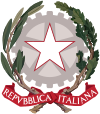
Back التعليم في إيطاليا Arabic Educació a Itàlia Catalan Bildungssystem in Italien German Εκπαίδευση στην Ιταλία Greek Sistema educativo de Italia Spanish Système éducatif en Italie French Կրթությունն Իտալիայում Armenian Istruzione in Italia Italian イタリアの教育 Japanese 이탈리아의 교육 Korean
 | |
| Ministero dell'Istruzione, dell'Università e della Ricerca | |
|---|---|
| Minister of Education and Merit | Giuseppe Valditara |
| National education budget (2016) | |
| Budget | €65 billion |
| General details | |
| Primary languages | Italian |
| System type | public |
| Compulsory primary education | 1859 |
| Literacy (2015) | |
| Total | 99.2%[1] |
| Post secondary | 386,000 |
Education in Italy is compulsory from 6 to 16 years of age,[2] and is divided into five stages: kindergarten (scuola dell'infanzia), primary school (scuola primaria or scuola elementare), lower secondary school (scuola secondaria di primo grado or scuola media inferiore), upper secondary school (scuola secondaria di secondo grado or scuola media superiore) and university (università).[3] Education is free in Italy and free education is available to children of all nationalities who are residents in Italy. Italy has both a private and public education system.[4]
In 2018, the Italian secondary education was evaluated as below the OECD average.[5] Italy scored below the OECD average in reading and science, and near OECD average in mathematics. Mean performance in Italy declined in reading and science, and remained stable in mathematics.[5] Trento and Bolzano scored at an above the national average in reading.[5] Compared to school children in other OECD countries, children in Italy missed out on a greater amount of learning due to absences and indiscipline in classrooms.[6] A wide gap exists between northern schools, which perform near average, and schools in the South, that had much poorer results.[7] The 2018 Progress in International Reading Literacy Study ranks children in Italy 16th for reading. Compared to school children in other OECD countries, children in Italy missed out on a greater amount of learning due to absences and indiscipline in classrooms.[8]
Tertiary education in Italy is divided between public universities, private universities and the prestigious and selective superior graduate schools, such as the Scuola Normale Superiore di Pisa. 33 Italian universities were ranked among the world's top 500 in 2019, the third-largest number in Europe after the United Kingdom and Germany.[9] Bologna University, founded in 1088, is the oldest university in continuous operation,[10] as well as one of the leading academic institutions in Italy and Europe.[11] The Bocconi University, Università Cattolica del Sacro Cuore, LUISS, Polytechnic University of Turin, Polytechnic University of Milan, Sapienza University of Rome, and University of Milan are also ranked among the best in the world.[12]
- ^ "- Human Development Reports". hdr.undp.org.
- ^ "comma 622". Camera.it. 2 December 2006. Retrieved 10 January 2018.
- ^ "- Human Development Reports" (PDF). hdr.undp.org.
- ^ Bertola, Giuseppe; Checchi, Daniele; Oppedisano, Veruska (December 2007). "Private School Quality in Italy" (PDF). Discussion Paper Series (IZA DP No. 3222). IZA Institute of Labor Economics.
- ^ a b c "PISA 2018 results". www.oecd.org. Retrieved 6 April 2021.
- ^ "Programme for International Student Assessment (PISA) Italy report" (PDF).
- ^ "The literacy divide: territorial differences in the Italian education system" (PDF). Parthenope University of Naples. Archived from the original (PDF) on 17 November 2015. Retrieved 16 November 2015.
- ^ "Italy report" (PDF).
- ^ "Number of top-ranked universities by country in Europe". jakubmarian.com. 2019.
- ^ Nuria Sanz, Sjur Bergan: "The heritage of European universities", 2nd edition, Higher Education Series No. 7, Council of Europe, 2006, [ISBN missing], p. 136
- ^ "Censis, la classifica delle università: Bologna ancora prima". 3 July 2017.
- ^ "Academic Ranking of World Universities 2015". Shanghai Ranking Consultancy. 2015. Archived from the original on 30 October 2015. Retrieved 29 October 2015.
© MMXXIII Rich X Search. We shall prevail. All rights reserved. Rich X Search